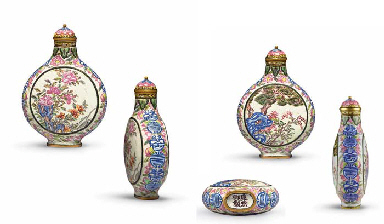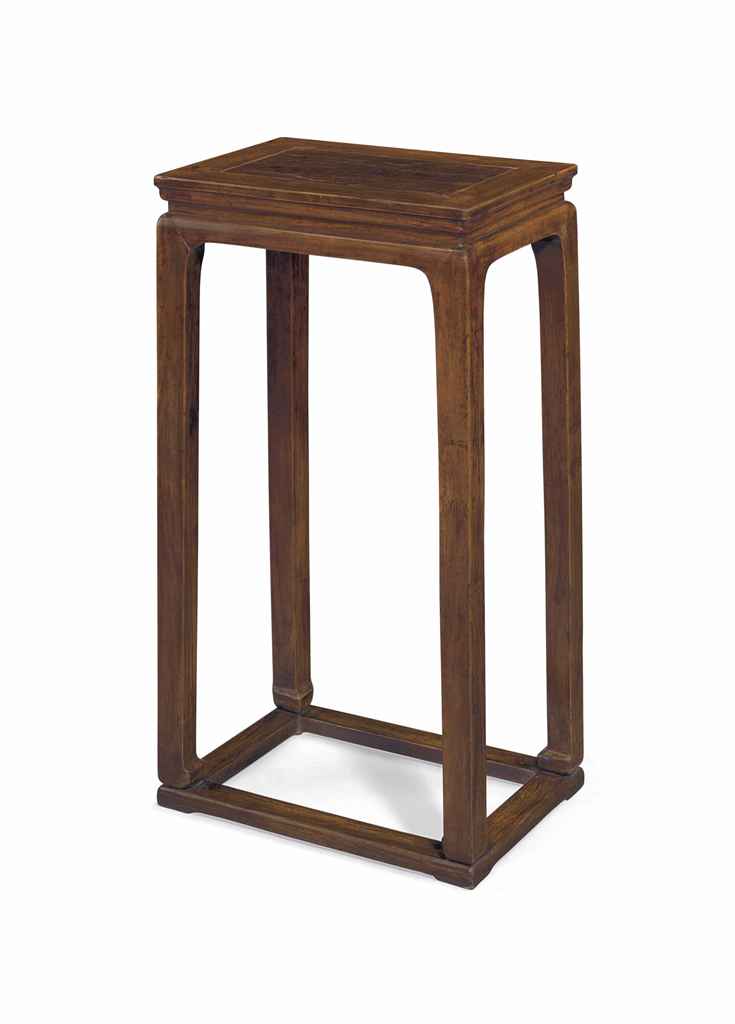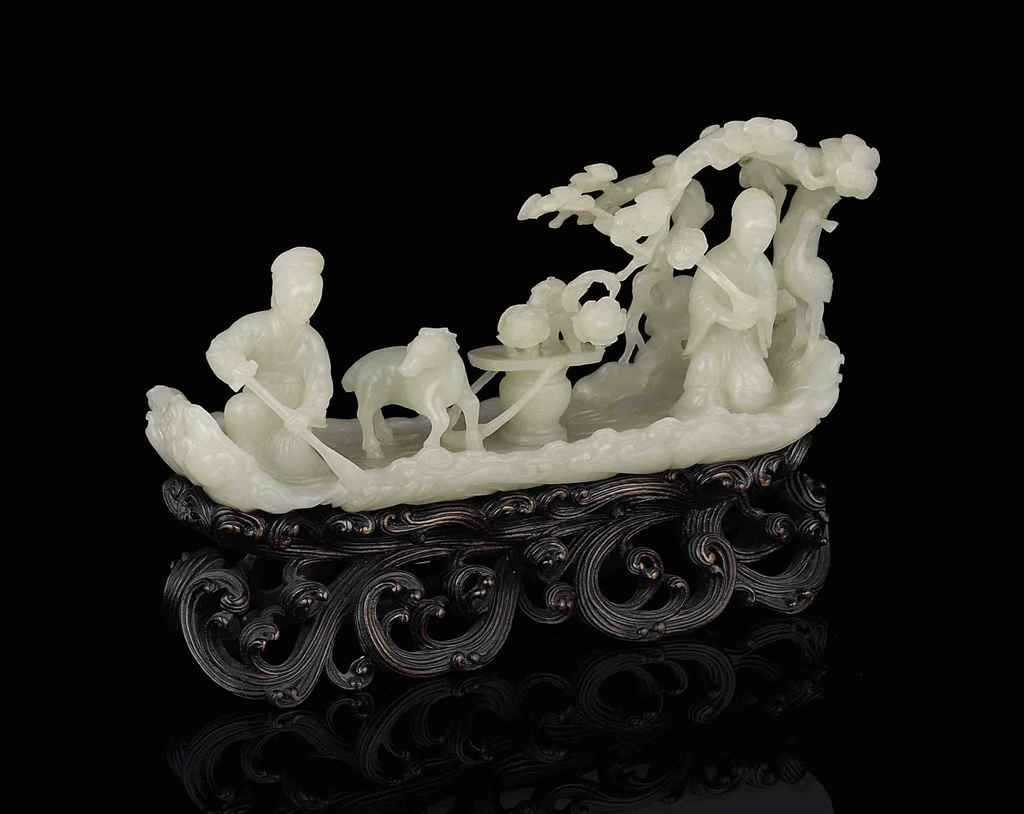A SUPERB VERY RARE LARGE CHINESE EXPORT SILVER EPERGNELate 19th century, impressed maker's Chinese marks of HO and Henglai
Elaborately constructed in six parts, the upper section as three curling magnolia-flower tapering holders, three lined with glass, all angled outwards from a taller central deep tall flower holder, attached to a six-lobed dish, each lobe deeply pierced and designed with a large shaped cartouche either of a bamboo cluster, a prunus blossom cluster, or a long snarling dragon coiling amongst cloud-scrolls, all screwed onto a very elaborate triangular base applied with three winged dragons descending to three projecting flanges, original wood stand designed to fit the base of the silver epergne. 48cm (19in) high, the silver 3360g. (5).Footnotes十九世紀晚期 餐桌中央裝飾銀立盤
「恒来」「HO」铸款
Epergne vases were flower holders placed at the centre of a table. This shape probably originated in France during the eighteenth century. Generally made from silver, the most popular designs had a dominant column or a large raised bowl in the centre issuing stylised branches or arms. The present example is made of four horn-shaped openings so it could hold four fresh flowers at the same time. The term 'epergne' Although the silver may have been indigenous from China, the design styles of these objects met western functional requirements which were completely different from the living customs of the Chinese.
Compare with a related but far less elaborate Chinese silver epergne, late Qing dynasty/Republic period, also made of four horns, just like the present example, illustrated by S.Kwan, Chinese Export Silver, Hong Kong, 2018, pp.328-329, no.127. See also a Chinese export silver centrepiece illustrated by H.A.Crosby Forbes, J.Devereux and R.S.Wilkins, Chinese Export Silver 1785 to 1885, Milton MA, 1975, p.231 fig.188. Compare with a related Chinese export silver epergne, circa 1900, which was sold at Sotheby's New York, 16 April 2015, Lot 193.Saleroom noticesPlease note that the present lot has the retailer mark of HC for Hung Chong, and not HO as written in the catalogue.
請注意本拍品的鑄款為「HC」代表銀器零售商鴻昌,而非圖錄裡的「HO」。
A SUPERB VERY RARE LARGE CHINESE EXPORT SILVER EPERGNELate 19th century, impressed maker's Chinese marks of HO and Henglai
Elaborately constructed in six parts, the upper section as three curling magnolia-flower tapering holders, three lined with glass, all angled outwards from a taller central deep tall flower holder, attached to a six-lobed dish, each lobe deeply pierced and designed with a large shaped cartouche either of a bamboo cluster, a prunus blossom cluster, or a long snarling dragon coiling amongst cloud-scrolls, all screwed onto a very elaborate triangular base applied with three winged dragons descending to three projecting flanges, original wood stand designed to fit the base of the silver epergne. 48cm (19in) high, the silver 3360g. (5).Footnotes十九世紀晚期 餐桌中央裝飾銀立盤
「恒来」「HO」铸款
Epergne vases were flower holders placed at the centre of a table. This shape probably originated in France during the eighteenth century. Generally made from silver, the most popular designs had a dominant column or a large raised bowl in the centre issuing stylised branches or arms. The present example is made of four horn-shaped openings so it could hold four fresh flowers at the same time. The term 'epergne' Although the silver may have been indigenous from China, the design styles of these objects met western functional requirements which were completely different from the living customs of the Chinese.
Compare with a related but far less elaborate Chinese silver epergne, late Qing dynasty/Republic period, also made of four horns, just like the present example, illustrated by S.Kwan, Chinese Export Silver, Hong Kong, 2018, pp.328-329, no.127. See also a Chinese export silver centrepiece illustrated by H.A.Crosby Forbes, J.Devereux and R.S.Wilkins, Chinese Export Silver 1785 to 1885, Milton MA, 1975, p.231 fig.188. Compare with a related Chinese export silver epergne, circa 1900, which was sold at Sotheby's New York, 16 April 2015, Lot 193.Saleroom noticesPlease note that the present lot has the retailer mark of HC for Hung Chong, and not HO as written in the catalogue.
請注意本拍品的鑄款為「HC」代表銀器零售商鴻昌,而非圖錄裡的「HO」。




.jpg)



.jpg)
.jpg)





Testen Sie LotSearch und seine Premium-Features 7 Tage - ohne Kosten!
Lassen Sie sich automatisch über neue Objekte in kommenden Auktionen benachrichtigen.
Suchauftrag anlegen